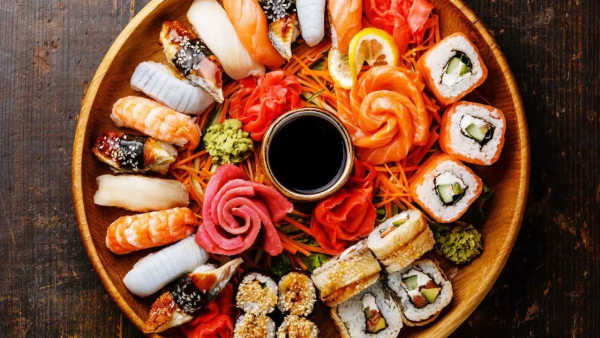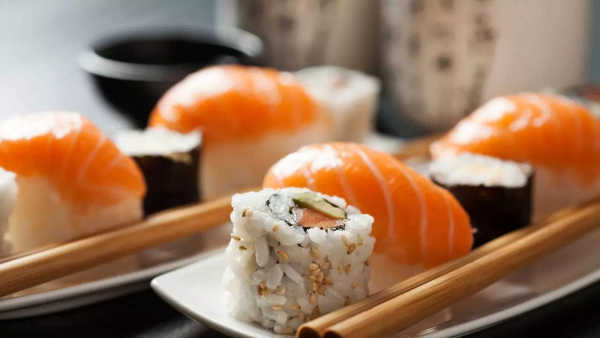Sushi has become a global food obsession, loved for its elegance, freshness and the promise of a light, healthy meal. From salmon rolls to avocado maki, it feels like a guilt-free indulgence that even nutritionists might approve of. But is sushi truly as healthy as it appears, or are we just seduced by its clean image? Science suggests that the truth lies somewhere in between.
A peer-reviewed study published in the found that while sushi-grade fish is generally safe when properly handled and stored, contamination risks do exist. Researchers tested samples of raw fish and discovered that improper refrigeration or hygiene could lead to traces of harmful bacteria and parasites. The findings confirm that sushi can be perfectly safe, but only when handled with precision and care.
The health benefits of sushi when prepared safely
When made correctly, sushi can be one of the most nutrient-rich meals on the menu. Fish such as salmon, tuna and mackerel are packed with omega-3 fatty acids, which have been shown to reduce inflammation and protect against heart disease. Seaweed, a common sushi ingredient, is an excellent source of iodine and magnesium, both of which support thyroid function and nerve health.
The vinegar in sushi rice offers mild antimicrobial properties, while vegetables like avocado, cucumber and carrots add fibre and healthy fats. Taken together, these ingredients form a meal that is low in saturated fat yet high in essential nutrients. When eaten in moderation, sushi can contribute to a balanced diet that supports heart, brain and digestive health.
The hidden risks of eating too much sushi

Despite its healthy reputation, sushi is not without its drawbacks. White rice, used in most rolls, has a high glycaemic index that can cause blood sugar spikes, especially in people with insulin resistance. Rolls that include fried fillings, mayonnaise or cream cheese can be surprisingly high in calories.
Another major concern is mercury. Certain fish, including tuna and swordfish, naturally contain trace levels of mercury that can accumulate in the body. recommends limiting high-mercury fish and choosing safer options such as salmon, shrimp and sardines. For pregnant women and children, avoiding raw fish altogether is often advised.
The importance of hygiene and temperature control
Sushi’s freshness is about more than flavour; it is a question of food safety. According to the Journal of Food Protection study, raw fish must be flash-frozen to at least -20°C for seven days to kill parasites before being served. Restaurants that follow these temperature guidelines drastically lower the risk of contamination.
However, not all establishments maintain these standards. Sushi that has been left unrefrigerated for long periods can harbour bacteria such as Listeria monocytogenes and Salmonella, both of which cause serious foodborne illness. To stay safe, consumers should choose restaurants that display clear hygiene certificates, maintain cold storage and prepare food fresh to order.
How to enjoy sushi the healthy way

Sushi can remain part of a healthy diet if approached mindfully. Choose rolls made with brown rice or go rice-free with sashimi to reduce carbohydrate intake. Opt for fish rich in omega-3s and pair your sushi with vegetable sides rather than fried appetisers. Using less soy sauce helps cut sodium levels, lowering the risk of bloating and high blood pressure.
Consume at least two portions of fish per week, one of which should be oily, to maintain heart and brain health. Green tea makes an ideal pairing with sushi, offering antioxidants that aid digestion and reduce free radical damage.
The verdict depends on how often you eat it and where it comes from. Sushi can be a clean, protein-rich meal that supports long-term health, but poor hygiene or excessive consumption of high-mercury fish can turn it into a risk. Balance, quality and variety are what make sushi truly beneficial.
Next time you sit at a sushi bar, remember that health lies in the details. Choose trusted restaurants, fresh fish and balanced portions. When you do, sushi becomes what it was meant to be, a perfect mix of art, culture and science that can nourish both your body and your soul.
Disclaimer: This article is for general informational purposes only and is not a substitute for professional medical advice, diagnosis, or treatment. Always seek the guidance of a qualified healthcare provider regarding any medical condition or lifestyle change.
Also read|
Contact to : xlf550402@gmail.com
Copyright © boyuanhulian 2020 - 2023. All Right Reserved.